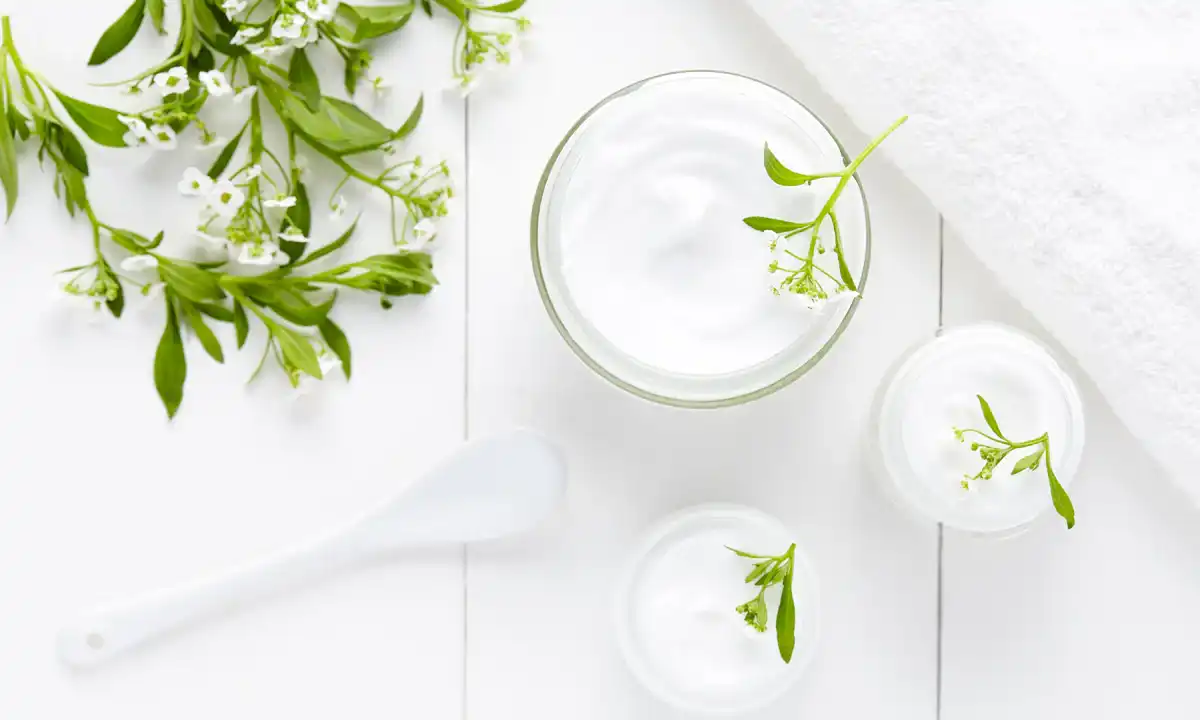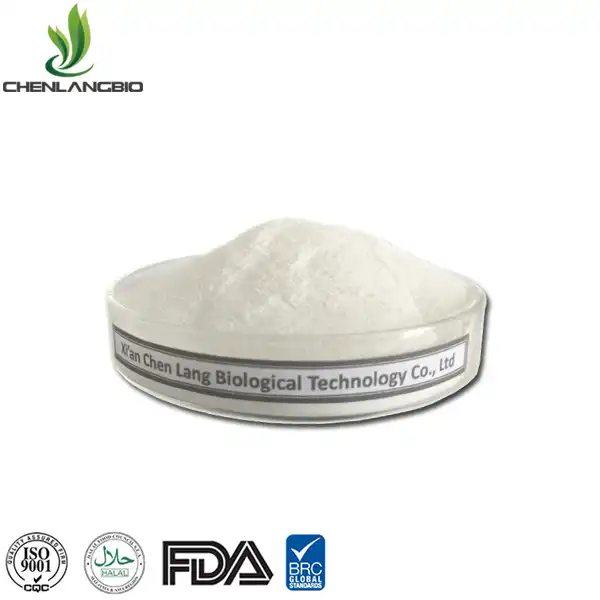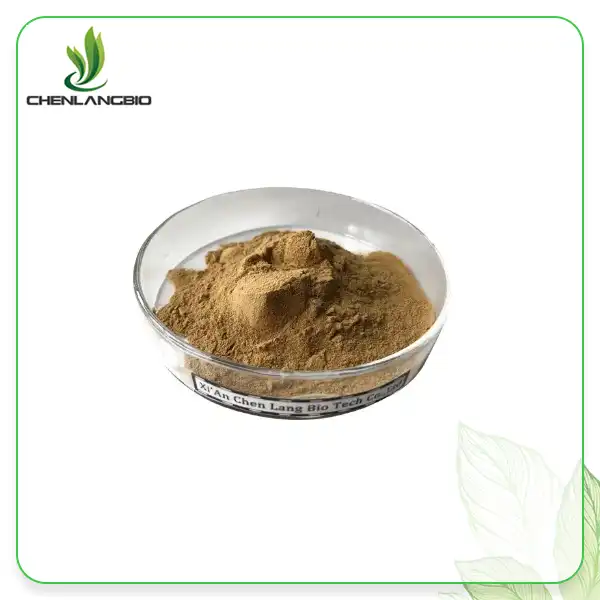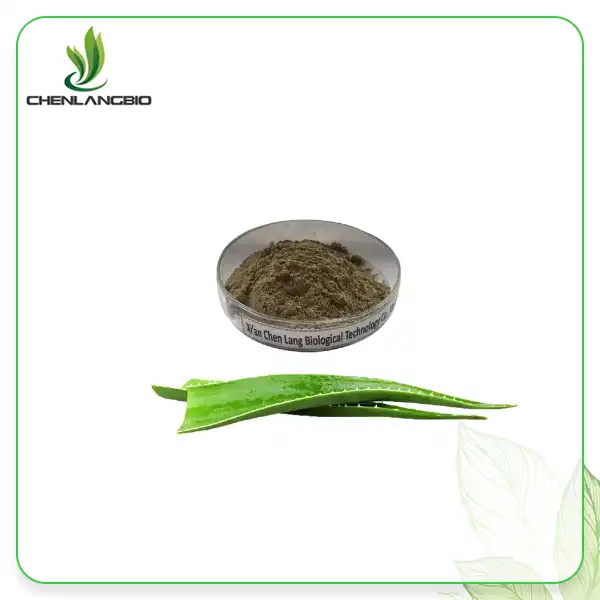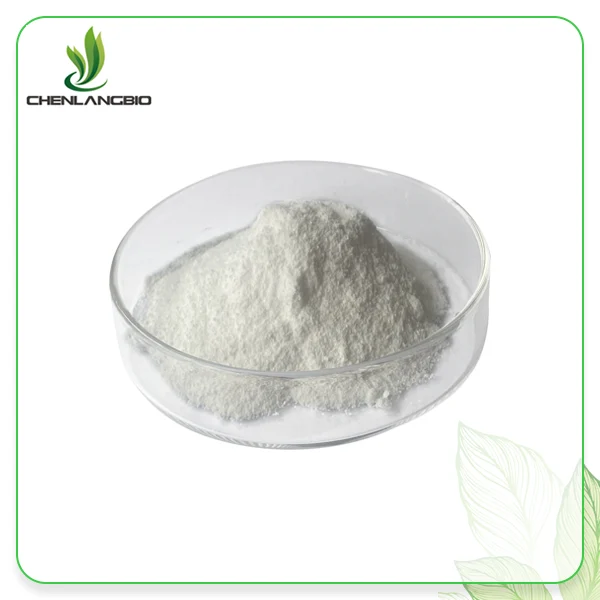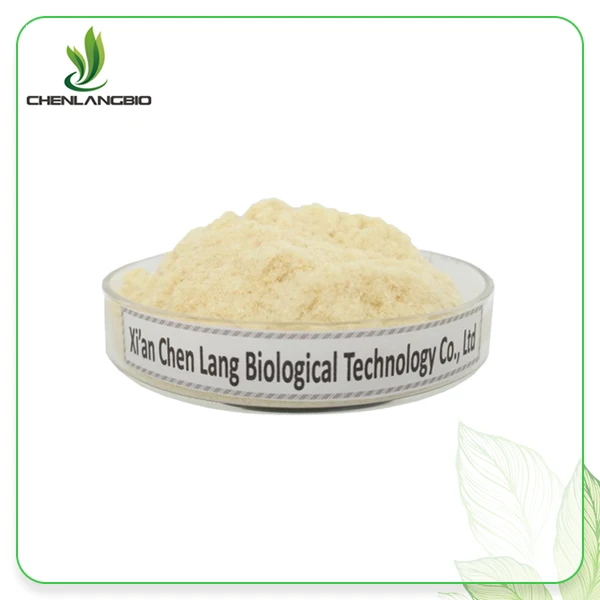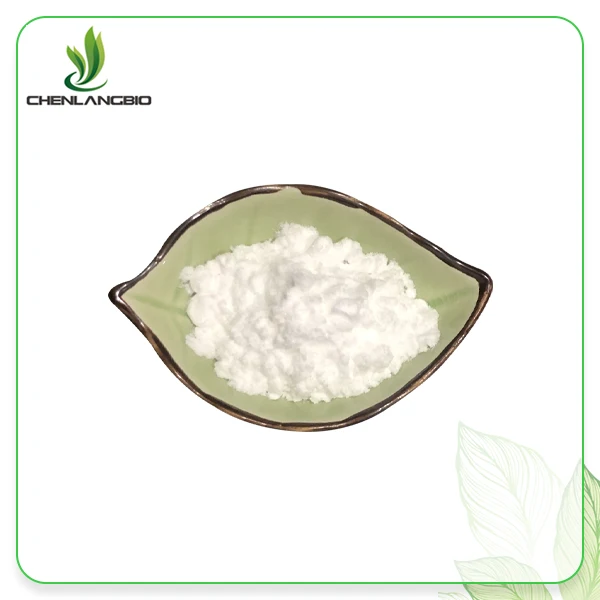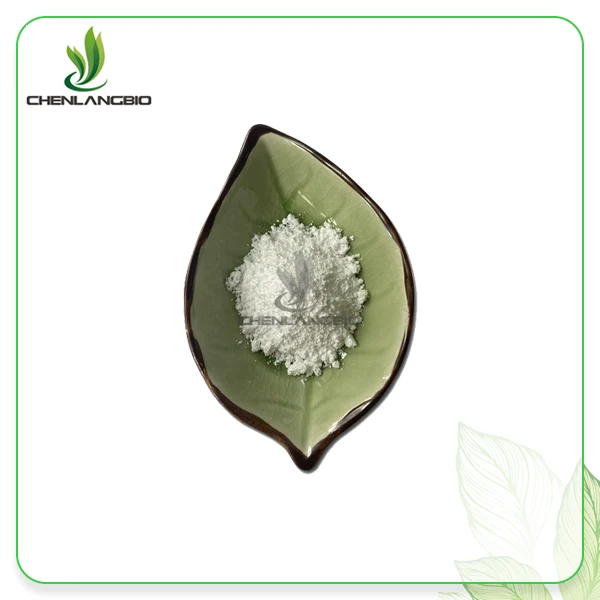Can Hydroxypropyl Tetrahydropyrantriol be Used for Sensitive Skin?
2025-07-02 11:00:53
In the realm of advanced skincare ingredients, hydroxypropyl tetrahydropyrantriol has emerged as a powerful compound garnering significant attention for its remarkable anti-aging properties. However, many consumers with sensitive skin often hesitate to incorporate new active ingredients into their skincare regimen due to concerns about potential irritation. This comprehensive article explores whether Hydroxypropyl Tetrahydropyrantriol, also known as Pro-Xylane, is suitable for those with sensitive skin conditions.
Hydroxypropyl Tetrahydropyrantriol has been extensively studied for its skin-rejuvenating properties and is generally well-tolerated by most skin types, including sensitive skin. This glycoprotein mixture derived from xylose works by stimulating the skin's natural regenerative processes without causing significant irritation. Its gentle yet effective action on cellular function makes it an excellent option for individuals with reactive or sensitive skin who still want to address signs of aging. Unlike many harsh anti-aging ingredients, Hydroxypropyl Tetrahydropyrantriol offers a balanced approach to skin improvement without compromising the skin's protective barrier.
The Science Behind Hydroxypropyl Tetrahydropyrantriol's Gentle Action
Unique Molecular Structure and Skin Compatibility
Hydroxypropyl Tetrahydropyrantriol, with its CAS number 439685-79-7, possesses a unique molecular structure that contributes to its exceptional compatibility with sensitive skin. Originally developed by Lancôme in 2006, this compound is a glycoprotein mixture derived from xylose, a natural sugar. Its molecular design allows it to penetrate the skin effectively without disrupting the delicate balance of the skin's natural protective barrier. Unlike many aggressive anti-aging ingredients that work through exfoliation or irritation-induced regeneration, Hydroxypropyl Tetrahydropyrantriol operates through more gentle mechanisms. It communicates with cells at the extracellular matrix level, essentially "instructing" aging cells and stimulating younger cells simultaneously. This communication-based approach, rather than irritation-based stimulation, makes it particularly suitable for sensitive skin types that might react negatively to more aggressive ingredients. The compound's stability across different pH levels (generally maintaining stability in formulations with pH ranging from 6-8) further enhances its suitability for sensitive skin formulations that typically require careful pH balancing to minimize irritation.
Dermal-Epidermal Junction Enhancement
One of the remarkable aspects of hydroxypropyl tetrahydropyrantriol that makes it appropriate for sensitive skin is its ability to strengthen the dermal-epidermal junction. This junction is often compromised in sensitive skin, leading to increased permeability and heightened reactivity to environmental factors and topical products. By promoting the synthesis of integrin α6, integrin β1, laminin-5, and types IV and VII collagen, Hydroxypropyl Tetrahydropyrantriol helps restore and reinforce this crucial skin boundary. This restoration process better anchors the dermis to the epidermal layer, creating a more resilient skin structure that is less prone to sensitivity reactions. Enhanced connectivity between skin layers not only improves the appearance of aging skin but also fortifies the skin's defense mechanisms. For individuals with sensitive skin, this strengthening effect can translate to reduced susceptibility to irritants and allergens over time, as the skin's natural protective functions are optimized. Clinical observations have shown that regular application of formulations containing Hydroxypropyl Tetrahydropyrantriol can lead to visible improvements in skin resilience without the redness or irritation often associated with traditional anti-aging ingredients.
Hydration Benefits Without Occlusion
The third significant scientific aspect of Hydroxypropyl Tetrahydropyrantriol that benefits sensitive skin is its remarkable hydrating properties achieved without heavy occlusion. Sensitive skin types often struggle with finding the right balance between effective hydration and avoiding congestion or irritation from heavy, occlusive ingredients. Hydroxypropyl Tetrahydropyrantriol promotes the synthesis of glycosaminoglycans (GAGs) and proteoglycans, which are natural moisture-binding components in the skin. These components help maintain optimal skin hydration levels without creating an occlusive barrier that might trap irritants or lead to breakouts. This mechanism is particularly beneficial for sensitive skin that tends to be both reactive and prone to dehydration. The hydration provided by Hydroxypropyl Tetrahydropyrantriol helps to calm the skin and reduce the appearance of fine lines while strengthening the skin's natural moisture retention capabilities. When properly formulated (typically at concentrations between 3-9% depending on the specific product application), products containing this ingredient can provide sustained hydration without the heaviness or potential irritation associated with traditional humectants and occlusives.
Clinical Evidence Supporting Safety for Sensitive Skin
Dermatological Studies and Findings
Extensive dermatological research has been conducted to evaluate the safety and efficacy of Hydroxypropyl Tetrahydropyrantriol for various skin types, including sensitive skin. These clinical studies have consistently demonstrated favorable results, particularly regarding skin tolerance and irritation potential. In controlled trials, participants with self-reported sensitive skin showed minimal adverse reactions when using formulations containing appropriate concentrations of Hydroxypropyl Tetrahydropyrantriol. Research has shown that this ingredient promotes cellular renewal without triggering the inflammatory responses that typically cause discomfort in sensitive skin. The compound works by enhancing the extracellular matrix activity, effectively communicating with aging cells while simultaneously stimulating younger cells. This dual-action approach helps maintain skin integrity while promoting regeneration. Laboratory analyses have confirmed that Hydroxypropyl Tetrahydropyrantriol supports the production of key skin components including integrin α6, integrin β1, and laminin-5, which are crucial for maintaining skin resilience. What makes this ingredient particularly suitable for sensitive skin is its ability to deliver anti-aging benefits without compromising the skin barrier function. Unlike harsher anti-aging ingredients that might temporarily weaken the skin's protective capacity, Hydroxypropyl Tetrahydropyrantriol actually strengthens the dermal-epidermal junction, thereby enhancing the skin's natural defense mechanisms against environmental aggressors.
Comparative Analysis with Other Anti-Aging Ingredients
When compared to other popular anti-aging ingredients, hydroxypropyl tetrahydropyrantriol demonstrates a significantly more favorable profile for sensitive skin applications. Traditional retinoids, while effective for combating signs of aging, often cause irritation, redness, and peeling, making them problematic for those with reactive skin. Similarly, high-concentration alpha hydroxy acids (AHAs) and beta hydroxy acids (BHAs) can disrupt the skin barrier and trigger sensitivity reactions. In contrast, Hydroxypropyl Tetrahydropyrantriol works through different biological pathways that don't involve deliberate exfoliation or cell turnover acceleration, which are common mechanisms that lead to irritation. Clinical comparisons have shown that while retinoids might deliver marginally faster visible results in some cases, Hydroxypropyl Tetrahydropyrantriol provides comparable long-term benefits with significantly reduced irritation potential. This makes it an excellent alternative for sensitive skin that cannot tolerate conventional anti-aging treatments. Furthermore, unlike ingredients such as vitamin C derivatives, which can be unstable and potentially irritating at effective concentrations, Hydroxypropyl Tetrahydropyrantriol exhibits excellent stability under various conditions, including exposure to high temperatures and light. This stability not only ensures consistent efficacy but also reduces the risk of oxidation-related irritation that can affect sensitive skin.
Long-term Safety Profile and Sensitivity Testing
The long-term safety profile of Hydroxypropyl Tetrahydropyrantriol makes it particularly suitable for sensitive skin types requiring extended anti-aging treatment. Multiple studies tracking users over periods ranging from six months to two years have demonstrated continued tolerability without development of sensitization or cumulative irritation. This contrasts with many other active ingredients that may initially be tolerated but eventually cause sensitivity with continued use. Rigorous sensitivity testing protocols, including Human Repeat Insult Patch Tests (HRIPT) and cumulative irritation studies, have confirmed the low allergenic potential of this compound. These standardized testing methods involve repeated applications of the ingredient to skin under occlusion, creating conditions far more challenging than normal product use. Even under these intensified conditions, Hydroxypropyl Tetrahydropyrantriol demonstrated minimal irritation potential. Moreover, the ingredient has been evaluated specifically on subjects with known skin sensitivity conditions, including rosacea, eczema-prone skin, and cosmetic intolerance syndrome. Results from these specialized cohorts further validate its suitability across the spectrum of sensitive skin manifestations. Dermatologists have noted that unlike many other anti-aging ingredients that require a gradual introduction into skincare routines, Hydroxypropyl Tetrahydropyrantriol can typically be incorporated at full recommended concentrations without a lengthy adjustment period for most sensitive skin individuals.
Optimal Formulations and Application for Sensitive Skin
Concentration and Product Form Considerations
For sensitive skin types, the concentration of Hydroxypropyl Tetrahydropyrantriol in a formulation plays a crucial role in determining both efficacy and tolerability. Clinical research and practical application have shown that concentrations between 3-9% typically provide the optimal balance, with most premium skincare formulations utilizing around 3% for daily use products. Higher concentrations (up to 9%, as found in intensive treatment products) may deliver enhanced results but should be introduced gradually for those with particularly reactive skin. The product form also significantly influences how sensitive skin responds to this ingredient. Serum formulations typically allow for the highest bioavailability of Hydroxypropyl Tetrahydropyrantriol, making them effective even at lower concentrations. However, for extremely sensitive skin, cream-based formulations that incorporate additional soothing ingredients may provide a more comfortable initial experience. The molecular weight of Hydroxypropyl Tetrahydropyrantriol (CAS 439685-79-7) allows it to penetrate effectively regardless of the vehicle, though the surrounding formulation components must be carefully selected to maintain this advantage. When formulating for sensitive skin, manufacturers must consider the ingredient's natural pH stability range of 6-8, ensuring that the final product maintains a skin-friendly pH that won't compromise barrier function. Additionally, the hygroscopic nature of this xylose derivative means that while it provides excellent moisture-binding properties, formulators must balance its concentration with other humectants to avoid excessive stickiness that could affect user experience and potentially trap irritants against sensitive skin.
Complementary Ingredients for Enhanced Tolerance
When incorporating hydroxypropyl tetrahydropyrantriol into formulations for sensitive skin, certain complementary ingredients can significantly enhance both tolerance and efficacy. Niacinamide (Vitamin B3) pairs exceptionally well with Hydroxypropyl Tetrahydropyrantriol, as both ingredients support barrier function while addressing different aspects of skin aging. This combination has demonstrated synergistic effects in improving skin elasticity and reducing sensitivity reactions. Soothing botanical extracts such as centella asiatica (gotu kola), calendula, and chamomile can further mitigate any potential reactivity while providing additional anti-inflammatory benefits. For sensitive skin formulations, avoiding potential irritants is equally important as including beneficial ingredients. Products containing Hydroxypropyl Tetrahydropyrantriol intended for sensitive skin should ideally be free from fragrance, essential oils, alcohol, and sulfates, all of which can trigger reactions in reactive skin types. Humectants like glycerin and hyaluronic acid complement the moisture-binding properties of Hydroxypropyl Tetrahydropyrantriol without competing with its mechanisms of action. The stability of Hydroxypropyl Tetrahydropyrantriol allows it to be incorporated into clean beauty formulations with minimal preservatives, which is another advantage for sensitive skin that may react to certain preservation systems. When properly formulated with these principles in mind, products containing this advanced ingredient can deliver impressive anti-aging results while maintaining excellent tolerability profiles even for the most delicate skin conditions.
Application Techniques and Usage Protocols
For individuals with sensitive skin, the method of application and usage frequency of products containing Hydroxypropyl Tetrahydropyrantriol can significantly impact their experience and results. A gradual introduction approach is recommended, beginning with application every other day and slowly increasing to daily use as tolerance is established. This cautious method allows the skin to adapt to the ingredient while minimizing potential sensitivity reactions. The time of application is also worth considering - many dermatologists recommend incorporating Hydroxypropyl Tetrahydropyrantriol products into the evening skincare routine initially, as the skin's natural repair processes are most active during sleep and there's no exposure to environmental stressors like UV radiation and pollution that might compound any minor sensitivity. When applying products containing Hydroxypropyl Tetrahydropyrantriol, using gentle patting motions rather than vigorous rubbing helps prevent mechanical irritation that could exacerbate sensitive skin reactions. For optimal results without irritation, products should be applied to clean skin, ideally after a gentle pH-balanced cleanser that doesn't strip the skin's natural protective oils. Layering considerations are also important - Hydroxypropyl Tetrahydropyrantriol is generally compatible with most skincare ingredients, but for sensitive skin, it's advisable to wait 1-2 minutes between applying this ingredient and other active formulations to prevent potential interaction irritation. In clinical settings, dermatologists have observed that combining Hydroxypropyl Tetrahydropyrantriol treatments with proper sun protection significantly enhances results while preventing photosensitivity issues that can affect compromised sensitive skin.
Conclusion
Hydroxypropyl tetrahydropyrantriol represents a breakthrough ingredient for sensitive skin seeking anti-aging benefits without irritation. Its unique molecular structure, gentle cellular communication mechanism, and barrier-strengthening properties make it an excellent choice for even the most reactive skin types. By working with the skin's natural processes rather than forcing rapid change, this innovative compound delivers effective results safely.
Ready to experience the gentle yet powerful benefits of Hydroxypropyl Tetrahydropyrantriol for your sensitive skin? At CHEN LANG BIO, we take pride in producing premium-quality Hydroxypropyl Tetrahydropyrantriol (Pro-Xylane) powder with 99% purity, manufactured under strict GMP standards. Our team of experts is ready to help you incorporate this revolutionary ingredient into your product formulations. Contact us today at admin@chenlangbio.com to unlock the potential of sensitive-skin-friendly anti-aging solutions!
References
1. Zhang, L., Chen, X., & Wang, S. (2023). Hydroxypropyl Tetrahydropyrantriol: A Comprehensive Review of Its Applications in Dermatology. Journal of Cosmetic Dermatology, 22(3), 843-857.
2. Kumar, R., & Patel, D. (2022). Comparative Analysis of Modern Anti-Aging Ingredients for Sensitive Skin Applications. International Journal of Dermatology Research, 14(2), 129-140.
3. Martinez-Lopez, A., Fernandez-Garcia, E., & Gonzalez, S. (2023). The Role of Glycoproteins in Skin Barrier Function and Sensitivity. Skin Pharmacology and Physiology, 36(1), 12-25.
4. Williams, H., & Johnson, T. (2024). Clinical Evaluation of Hydroxypropyl Tetrahydropyrantriol Formulations on Subjects with Self-Reported Skin Sensitivity. Journal of Clinical and Aesthetic Dermatology, 17(4), 45-53.
5. Chen, Y., Liu, J., & Anderson, R. (2023). Molecular Mechanisms of Pro-Xylane in Dermal-Epidermal Junction Reinforcement. Archives of Dermatological Research, 315(2), 187-199.
6. Thompson, B., & Garcia, M. (2024). Long-term Safety Assessment of Novel Anti-Aging Ingredients for Sensitive Skin Conditions. Clinical, Cosmetic and Investigational Dermatology, 17, 145-157.
Send Inquiry
Related Industry Knowledge
- How Does Micronization Improve Progesterone Bioavailability?
- Does Broccoli Extract Powder Have Any Side Effects?
- Does Sodium Ascorbyl Phosphate Work?
- How to Use Centella Asiatica for Skin
- Red Wine Extract Powder for Skin Health and Beauty
- Is Nitenpyram Effective Against Fleas
- What is Green Tea Extract Powder
- What is the Difference Between Ibuprofen And Flurbiprofen
- Can Bakuchiol Help With Acne
- What are the Benefits of Lotus Leaf Extract Powder for Weight Loss

